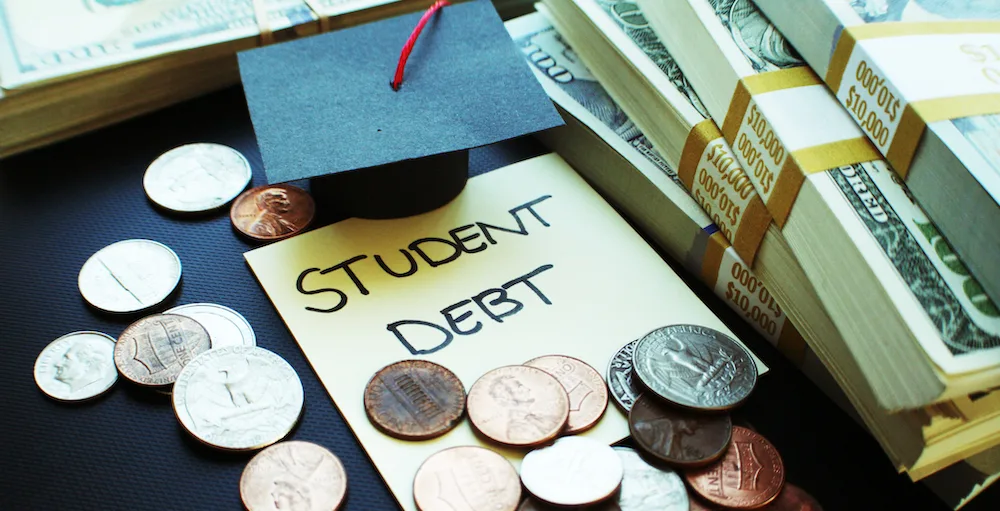How financial literacy and micro-investing can help reduce student debt and build a financially aware generation.
Dec 10, 2024Explore how improving financial literacy and introducing micro-investing at an early age can reduce student debt and create a financially literate generation, equipped to make smarter financial decisions.
Financial Literacy and Micro-Investing: Combating Student Debt and Building a Financially Aware Generation
The rising tide of student loan debt in the US and globally highlights a critical need for improved financial literacy. Several studies underscore the link between financial knowledge and responsible borrowing behavior. Let's explore how financial literacy and micro-investing can help mitigate this issue and cultivate a more financially savvy generation.
The Impact of Financial Literacy on Student Debt
Research consistently demonstrates a strong correlation between financial literacy and positive financial outcomes, including reduced student debt. For example:
-
Reduced Stress and Defaults: Studies show that financially literate students experience less stress related to student loans and are less likely to default on their payments. (Source: iGrad Financial Wellness blog, "How Can Financial Education End the Student Debt Crisis?") This is because they understand loan terms, repayment options (like income-based repayment), and the consequences of missed payments.
-
Informed Borrowing Decisions: Financially literate students are more likely to view student loans as an investment and make better decisions about how much to borrow and how to manage their debt. Conversely, those lacking financial knowledge often make counterproductive choices, leading to higher debt burdens. (Source: iGrad Financial Wellness blog, "How Can Financial Education End the Student Debt Crisis?")
-
Improved Financial and Educational Decisions: A study found that students with high financial literacy made better decisions regarding borrowing and education, unlike their less financially literate peers. (Source: iGrad Financial Wellness blog, "How Can Financial Education End the Student Debt Crisis?")
-
Awareness of Repayment Programs: Many borrowers are unaware of income-based repayment programs, leading to high monthly payments despite low income and increased risk of default. Financial education addresses this knowledge gap. (Source: iGrad Financial Wellness blog, "How Can Financial Education End the Student Debt Crisis?")
-
Understanding of Interest Accrual: Many borrowers defer payments without realizing that interest continues to accrue, increasing their overall debt. Financial literacy educates borrowers about this crucial aspect of loan repayment. (Source: iGrad Financial Wellness blog, "How Can Financial Education End the Student Debt Crisis?")
The Role of Micro-Investing in Building Financial Awareness
While financial literacy provides the foundation, micro-investing offers a practical application for building long-term financial security and reducing reliance on debt. Micro-investing, or investing small amounts of money regularly, can help students:
-
Develop a Savings Habit: Regular, even small, contributions to an investment account instill a crucial savings habit. This habit can be applied to other financial goals beyond paying off student loans.
-
Learn About Investing: Micro-investing provides a low-risk entry point into the world of investing, allowing students to learn about different asset classes and investment strategies without significant financial risk.
-
Build Wealth Over Time: The power of compounding returns means that even small, consistent investments can grow substantially over time, providing a financial buffer against future debt or unexpected expenses.
-
Reduce Reliance on Debt: By building a financial safety net through micro-investing, students may be less reliant on high-cost borrowing options in the future.
Integrating Financial Literacy and Micro-Investing for a Financially Aware Generation.
To effectively combat student debt and foster a financially aware generation, a comprehensive approach is needed:
-
K-12 Financial Education: Mandating personal finance and economics courses in high schools, aligned with standards like those from the Council for Economic Education (CEE), is crucial. (Source: American Youth Policy Forum blog, "Solving Student Loan Debt through Financial Literacy")
-
Teacher Training: Providing financial training for K-12 instructors, counselors, and families ensures effective delivery of financial literacy education. (Source: American Youth Policy Forum blog, "Solving Student Loan Debt through Financial Literacy")
-
College-Level Initiatives: Colleges should integrate financial literacy into their curricula and provide resources to help students make informed borrowing decisions. (Source: EdSurge News, "Preventing Student Debt Problems Begins With Financial Literacy Education")
-
Accessible Micro-Investing Platforms: Promoting the use of user-friendly micro-investing platforms can make investing accessible to all students, regardless of their financial background.
-
Holistic Financial Wellness Programs: Implementing comprehensive financial wellness programs that address budgeting, debt management, saving, and investing can empower students to take control of their financial futures. (Source: iGrad Financial Wellness blog, "How Can Financial Education End the Student Debt Crisis?")
By combining robust financial literacy education with accessible micro-investing opportunities, we can equip young people with the knowledge and tools to make responsible financial decisions, reduce their reliance on debt, and build a more financially secure future. The evidence is clear: financial literacy is not just a desirable skill; it's a critical component of long-term financial well-being and economic stability.


SEC Accounting Bulletins on Digital Assets: SAB 121 and SAB 122
Explore the complexities of SEC's Staff Accounting Bulletins 121 and 122, their impact on crypto custody, and the pushback from the financial industry and Congress. Learn about the ongoing debate on digital asset regulation.
Published Jan 23, 2025
Understanding the Collectibles Landscape: Baseball Cards, Stamp Paper, and the Rise of Trump Coin
Explore the world of collectibles, from baseball cards and stamp paper to the digital Trump Coin. Compare market dynamics, investment potential, and unique characteristics.
Published Jan 23, 2025
The Potential for a USA Digital Asset Stockpile: Exploring the Future of Cryptocurrency Reserves
Explore the potential of a USA digital asset stockpile, examining Trump's evolving stance, legislative initiatives, benefits, challenges, and the role of a crypto working group.
Published Jan 23, 2025